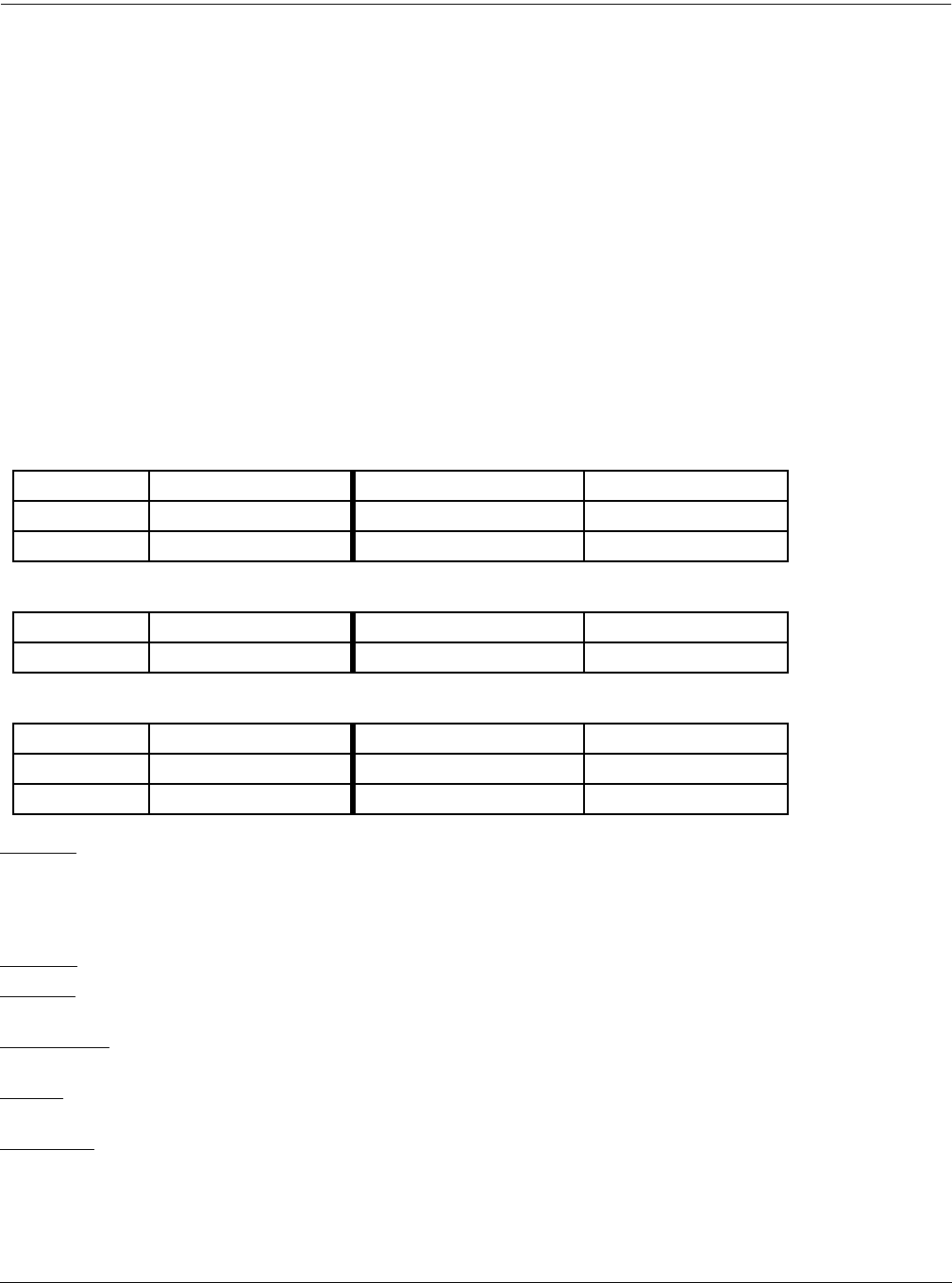User Guide
Table Of Contents
- FXAlg #1: MiniVerb • FXAlg #2: Dual MiniVerb
- FXAlg #3: Gated MiniVerb
- FXAlgs #4-11: Classic • TQ • Diffuse • Omni reverb...
- FXAlg #12: Panaural Room
- FXAlg #13: Stereo Hall
- FXAlg #14: Grand Plate
- FXAlg #15: Finite Verb
- FXAlg #130: Complex Echo
- FXAlg #131: 4-Tap Delay • FXAlg #132: 4-Tap Delay ...
- FXAlg #133: 8-Tap Delay • FXAlg #134: 8-Tap Delay ...
- FXAlg #135: Spectral 4-Tap • FXAlg #136: Spectral ...
- FXAlgs #150–153: Choruses
- FXAlg #154: Flanger 1 • FXAlg #155: Flanger 2
- FX Algs #156-160: Phasers
- Combination Algorithms [“+”]
- Configurable Combination Algorithms [“<>”]
- FXAlg #714: Quantize+Flange
- FXAlg #715: Dual MovDelay • FXAlg #716: Quad MovDe...
- FXAlg #720: MonoPitcher+Chor • FXAlg #721: MonoPit...

FXAlg #15: Finite Verb
Algorithm Reference-31
The Rvb Env control selects 27 cases of envelope gains for the taps. Nine cases emulate a normal forward-evolving
reverb, but with some special twists. Cases FWD R1xx have a single reverb peak, with a fast attack and slower
decay. The sub cases FWD R1Sx vary the sharpness of the envelope, from dullest (S1) to sharpest (S3). The sub cases
FWD R2xx have two peaks; that is, the reverb builds, decays, builds again, and decays again. The sub cases FWD
R3xx have three peaks.
The sub cases SYM have a symmetrical build and decay time. The cases R1 build to a single peak, while R2 and R3
have two and three peaks, respectively.
The sub cases REV simulate a reverse reverb effect. REV R1xx imitates a backward running reverb, with a long
rising "tail" ending abruptly (followed, optionally, by the "dry" source mixed by Dly Lvl). Once again, the number
of peaks and the sharpness are variable.
The usual Wet/Dry and Output Gain controls are provided.
Parameters:
PAGE 1
PAGE 2
PAGE 3
Wet/Dry Wet/Dry sets the relative amount of wet signal and dry signal. The wet signal consists of
the reverb itself (stereo) and the delayed mono signal arriving after the reverb has ended
(simulating the dry source in the reverse reverb sequence). The amount of the delayed
signal mixed to the Wet signal is separately adjustable with the Dly Lvl control. The Dry
signal is the stereo input signal.
Out Gain This controls the level of the output mix, wet and dry, sent back into KDFX.
Fdbk Lvl This controls the feedback gain of the separate (mono) delay tap. A high value
contributes a long repeating echo character to the reverb sound.
HF Damping HF Damping adjusts a lowpass Þlter in the late delay tap feedback path so that high
frequencies die away more quickly than mid and low frequencies.
Dly Lvl This adjusts the level of the separate (mono) delay tap used to simulate the dry source of
a reverse reverb effect. This same tap is used for feedback.
Dly Length Sets the length (in milliseconds), of the separate (mono) delay tap used to simulate the
dry source of a reverse reverb effect. This same tap is used for feedback.
Wet/Dry 0 to 100%wet Out Gain Off, -79.0 to 24.0 dB
Fdbk Lvl 0 to 100%
HF Damping 16 to 25088 Hz
Dly Lvl 0 to 100% Rvb Env REV R1S1
Dly Length 300 to 3000 ms Rvb Length 300 to 3000 ms
Early Bass -15 to 15 dB Early Damp 16 to 25088 Hz
Mid Bass -15 to 15 dB Mid Damp 16 to 25088 Hz
Late Bass -15 to 15 dB Late Damp 16 to 25088 Hz










